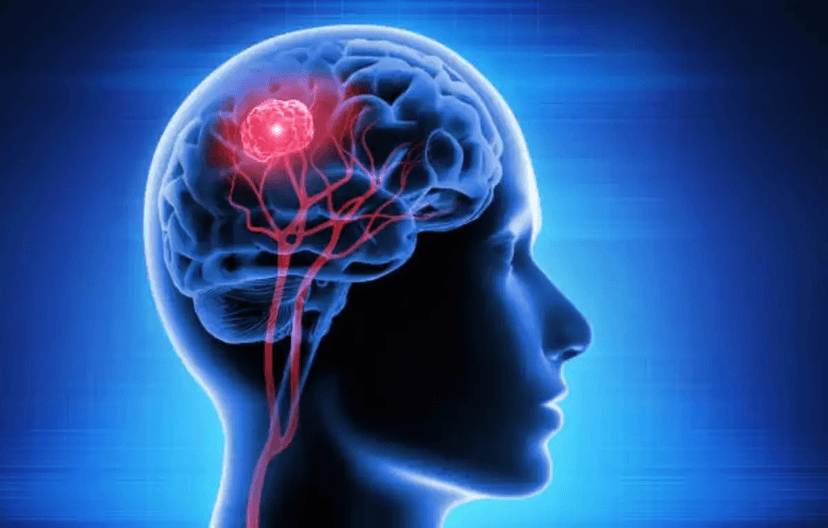
The Ultimate Guide to Bile Duct Cancer Treatment in the UAE
11 Jul, 2024
 Healthtrip Team
Healthtrip TeamAre you or someone you care about facing the challenges of bile duct cancer? Choosing where to undergo treatment is a crucial decision, one that combines medical expertise with compassionate care. In the UAE, you'll find a haven for advanced healthcare, offering hope and comprehensive treatment options for bile duct cancer patients. Why consider the UAE for bile duct cancer treatment? Beyond its stunning landscapes and vibrant culture, the UAE boasts world-class hospitals equipped with cutting-edge technology and a dedicated team of oncologists. Here, personalized care meets innovative treatment protocols, ensuring you receive the best possible care from diagnosis to recovery. Curious about the leading hospitals specializing in bile duct cancer treatment? Wondering how they prioritize your well-being throughout your treatment journey? Join us as we explore the top-tier medical facilities and personalized approaches available in the UAE for tackling bile duct cancer.
Most popular procedures in India
Symptoms of Bile Duct Cancer
Symptoms of bile duct cancer, or cholangiocarcinoma, can vary depending on the location and stage of the cancer. Here are some common symptoms to watch for:
Wellness Treatments
Give yourself the time to relax
Lowest Prices Guaranteed!

Lowest Prices Guaranteed!
a. Yellowing of the Skin and Eyes (Jaundice): This happens when bile, which normally helps digest fats, builds up in your bloodstream.
b. Itchy Skin (Pruritus): You might experience intense itching because of bile salts accumulating in your skin.
c. Abdominal Pain: Pain in the upper right side of your belly or around your right shoulder blade can occur.
d. Unexplained Weight Loss: Losing weight without trying could be a sign of various health issues, including bile duct cancer.
e. Fever and Chills: If you have jaundice along with fever, it might indicate an infection in your bile ducts.
f. Changes in Stool and Urine Color: Your stool might become pale or grey, while your urine can darken.
g. Fatigue: Feeling very tired, even after resting, is common with many illnesses, including bile duct cancer.
h. Nausea and Vomiting: These symptoms might occur, especially if they accompany jaundice and abdominal pain.
These symptoms can be caused by other conditions as well, but if you experience persistent or worsening symptoms, it's essential to consult a healthcare professional for proper evaluation and diagnosis.
Diagnosis of Bile Duct Cancer Treatment in the UAE
Staging of Bile Duct Cancer
- Stage 0 (Carcinoma in situ): Abnormal cells are found only in the innermost layer of the bile duct lining.
- Stage I: Cancer has formed and may have spread into nearby layers of tissue but not beyond the bile duct.
- Stage II: Cancer has grown into nearby blood vessels or has spread to nearby lymph nodes.
- Stage III: Cancer has spread extensively into nearby tissues and possibly to lymph nodes.
- Stage IV: Cancer has spread to distant organs or tissues.
Treatment Options for Bile Duct Cancer Treatment in the UAE
Top Hospitals for Bile Duct Cancer Treatment in the UAE
1. NMC Royal Hospital, Abu Dhabi
- Established Year: 1974
- Location: 16th St - Khalifa City SE-4 - Abu Dhabi - United Arab Emirates, United Arab Emirates
About The Hospital:
- NMC Royal Hospital is a premier healthcare facility in Abu Dhabi, equipped with advanced technology and staffed by medical professionals trained in global healthcare practices.
- It provides high-quality healthcare services to patients not only in the capital but also from across the UAE and GCC.
- Strategically located in Khalifa City, it serves the growing populations of various Abu Dhabi suburbs, including Al Raha, Mussafah, Mohammed bin Zayed City, Masdar City, Abu Dhabi International Airport, Shahama, and Yas Island.
- Total Number of Beds: 500
- ICU Beds: 53
- Number of Surgeons: 12
- The hospital features state-of-the-art critical care units, including a dedicated cardiac unit with round-the-clock intensivist cover.
- A team of over 90 doctors, including 32 consultants and 28 specialists, is primarily Western qualified, ensuring high medical standards.
- The medical program at NMC Royal Hospital focuses on Cardiac Sciences, Emergency Medicine & Critical Care, Mother and Child Health, Gastroenterology and Hepatology, and Neuro Sciences.
- The hospital boasts advanced medical technology, including a hybrid operating theatre, a 3 Tesla MRI unit, a 256-slice CT scanner, and an automated laboratory system.
- It has 53 critical care beds and offers the region's first NICU and PICU combination in the private sector.
- NMC Royal Hospital specializes in providing comprehensive clinical care, including a detailed chronic disease management program.
- The hospital offers a wide range of medical specialities, including Oncology, Orthopedics, Cardiology, Nephrology & Urology, ENT, and GI & Bariatric.
- NMC Royal Hospital, Abu Dhabi, is committed to delivering exceptional healthcare services and is a prominent healthcare destination in the region.
2. Iranian Hospital
- Established Year: 1972
- Location: Al Wasl Rd - Al Bada'a - Dubai - United Arab Emirates
About The Hospital:
- It was established with the support of His Highness Sheikh Rashid Bin Saeed Al Maktoum and is a not-for-profit organization with a charity focus.
- Total Number of Beds: 220
- ICU Beds: 19
- Operation Theatres: 10
- Number of Surgeons: 2
- 220 premium in-patient beds and 25 sub-specialty clinics.
- Gastro-endoscopy centre and diagnostic imaging centre.
- 10 operation rooms equipped for laparoscopic and minimally invasive surgery.
- Fully automated advanced laboratory and the first cytogenetic and DNA diagnostic lab in the region.
- In-patient services include a 24-hour Emergency Department, ICU, CCU, Internal Medicine ward, Global Healthcare Services department for health tourist referrals, Men and Women surgical wards, Day Care Surgery ward, Cath-lab, Gynecology and obstetrics ward, Labour ward and Suits, Neonatal ICU, Pediatric ward, and Pediatric
- The hospital's mission is to provide top-notch healthcare services while fostering cooperation between Iran and the UAE.
- A committed team of highly skilled and dedicated experts in medical, nursing, and paraclinical services.
- Iranian Hospital, offers a wide range of medical treatments, including cardiology, surgery, dermatology, paediatrics, and more. It provides comprehensive healthcare services across various specialities to meet diverse patient needs.
How can HealthTrip assist with your treatment?
If you're seeking Bile Duct Cancer Treatment, let HealthTrip be your compass. We support you throughout your medical journey with the following:
- Access to top doctors in 38+ countries and the largest health travel platform.
- Partnerships with 1500+ hospitals, including Fortis, Medanta, and more.
- Treatments in neuro, cardiac care, transplants, aesthetics, and wellness.
- Post-treatment care and assistance.
- Teleconsultations with leading doctors at $1/minute.
- Over 61K patients served.
- Access Top treatments and packages, such as Angiograms and many more.
- Gain insights from genuine patient experiences and testimonials.
- Stay updated with our medical blog.
- 24/7 unwavering support, from hospital formalities to travel arrangements or emergencies.
Hear from our satisfied patients
Facing bile duct cancer is challenging, but choosing the right treatment location can make a significant difference. The UAE offers world-class hospitals with advanced technology and compassionate care. With personalized treatment plans and a beautiful recovery environment, the UAE is an excellent choice for bile duct cancer patients. Plan well to ensure a smooth health journey.
Related Blogs

Healthtrip's Guide to Prostate Cancer Care in UAE: A Global Perspective
Explore Healthtrip's comprehensive guide on prostate cancer treatments in the

Mediclinic Parkview Hospital: Your Partner in Health
Mediclinic Parkview Hospital offers a wide range of medical services

Experience World-Class Healthcare in Dubai with Healthtrip
Get the best medical treatment in Dubai with Healthtrip, a

Brain Tumor Treatment Options in the UK
Facing a brain tumor diagnosis can be overwhelming. The good

Neurological Treatments in the UK: Cutting-Edge Care for Brain Tumors
When it comes to neurological conditions, particularly brain tumors, the

3D Printing Technology for Customized Cancer Treatment Plans in UAE
Cancer treatment has advanced significantly over the past few decades,











